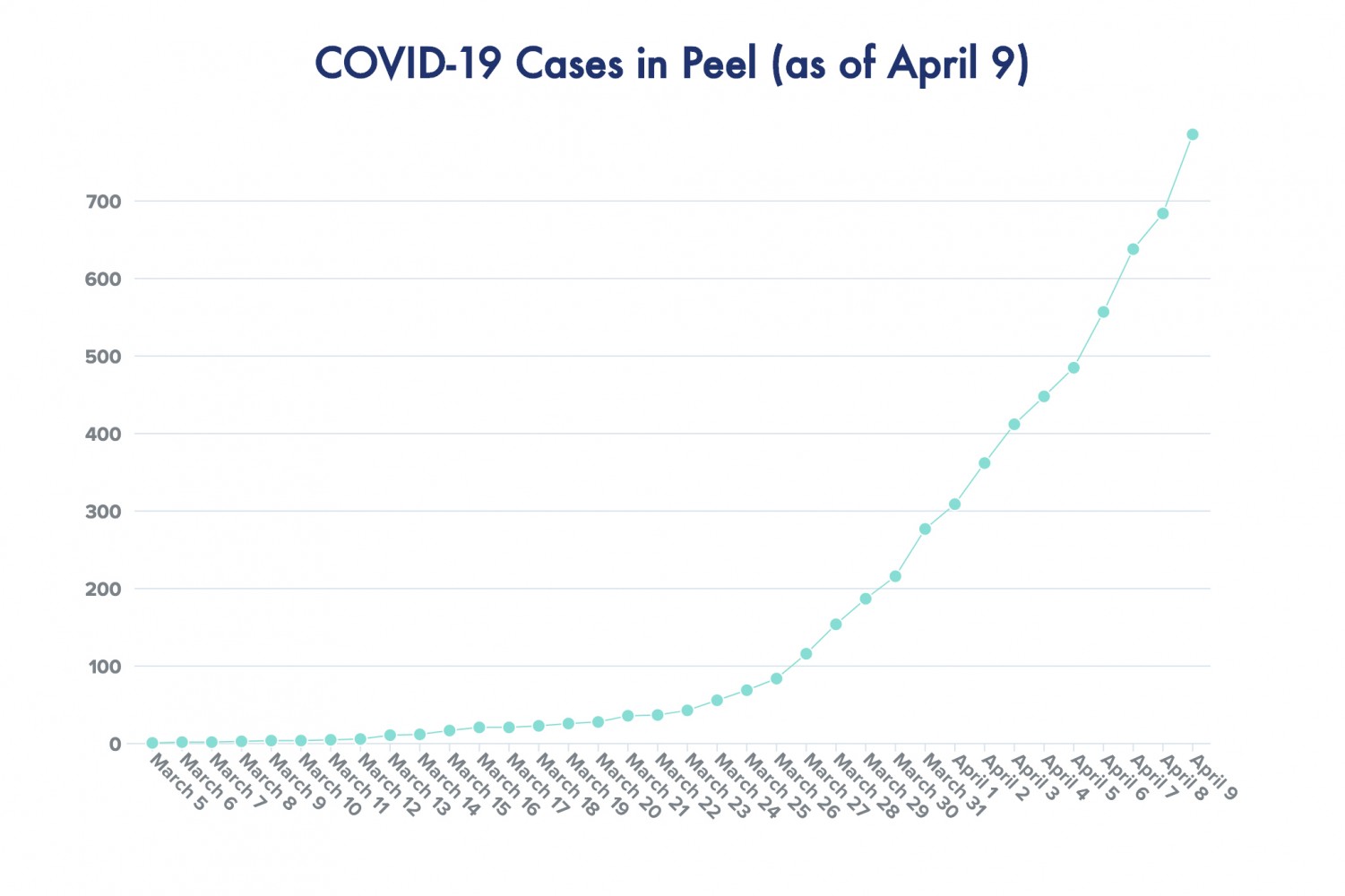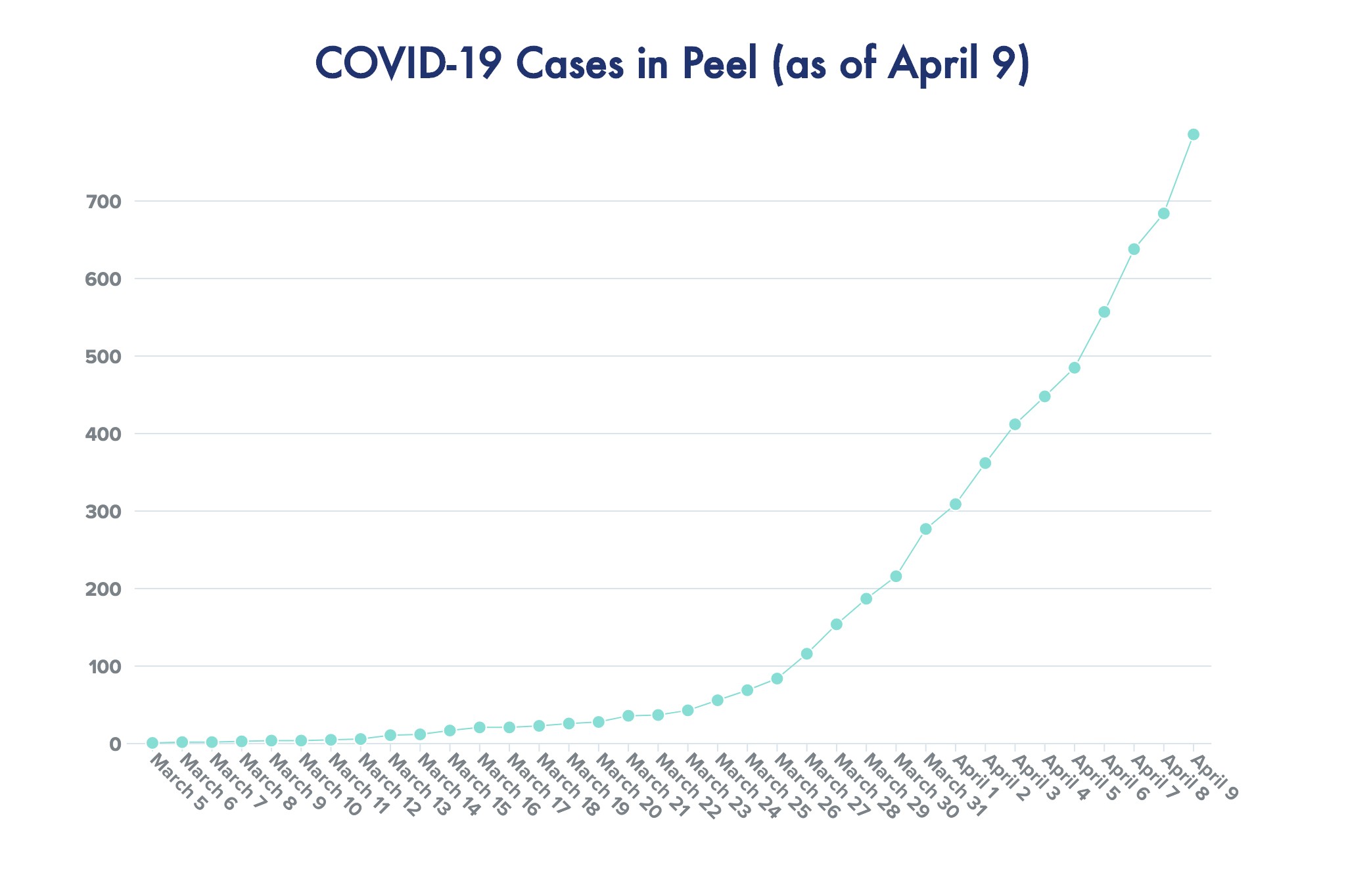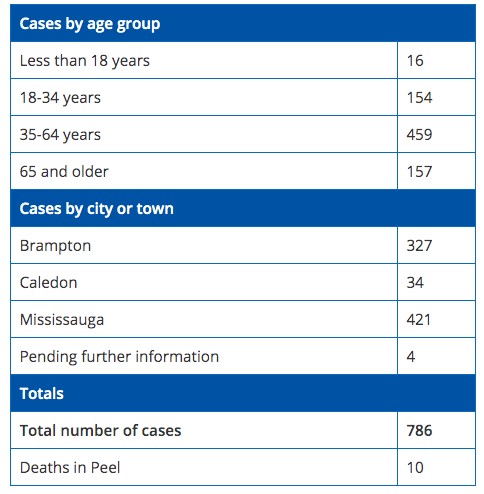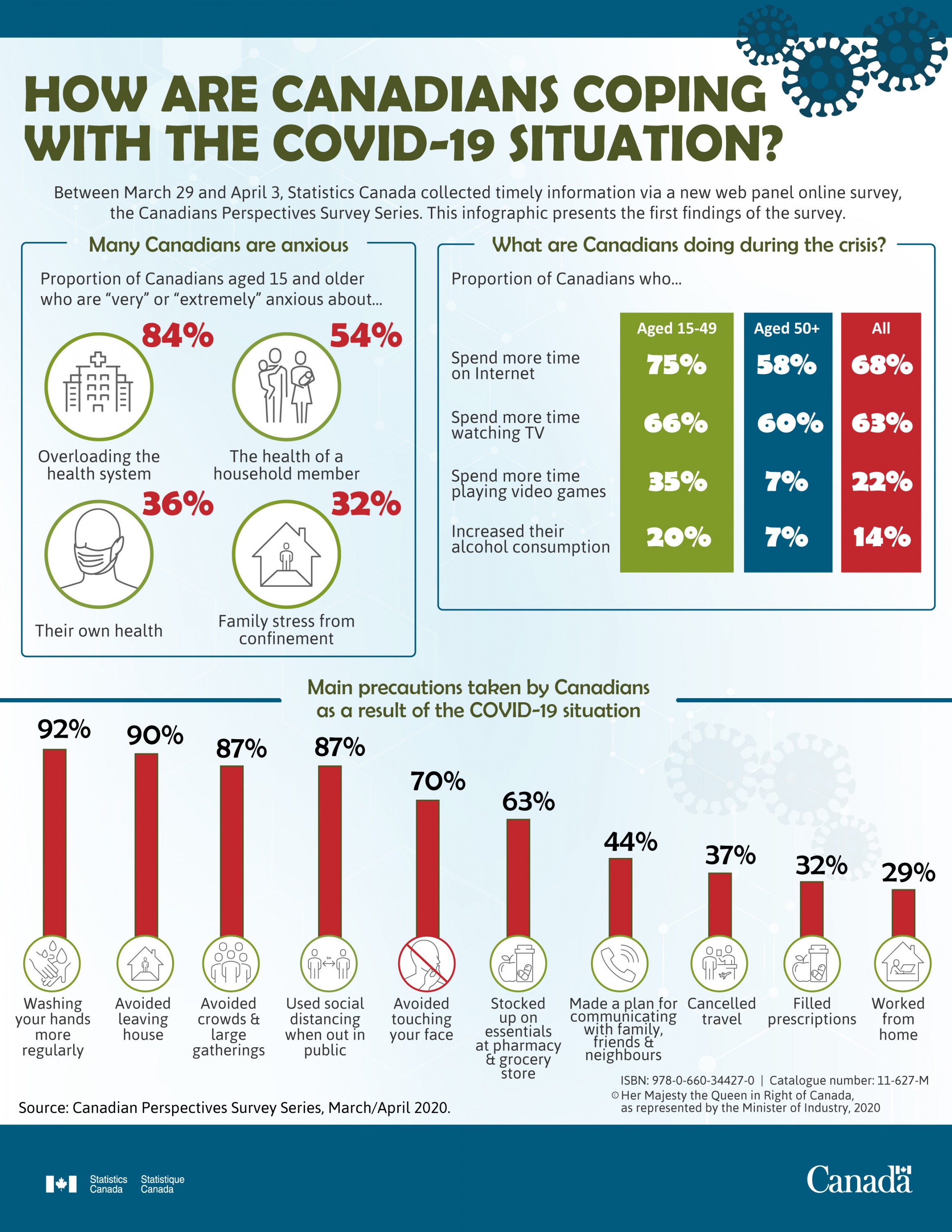
Stats Can survey reveals fear for health, violence and civil disorder during COVID-19; 102 new cases confirmed in Peel Thursday
Peel’s Public Health Unit has confirmed another 102 cases of COVID-19 in the region Thursday morning, marking a 41 percent increase in new infections since Monday and bringing Peel’s total to 786, including 10 deaths.
However, while the number of new cases climbs with large day-over-day increases, the overall rate of new infections across the region appears to be slowing compared to the end of March.

While the continually rising numbers can be anxiety inducing, and Thursday’s increase representing the largest single-day jump since infections began in Peel, these types of figures were expected. Projections in various models created by public health professionals for weeks, factoring variables such as the onset of community transmission, people returning from March Break travels and the earlier trends seen in jurisdictions outside Canada, made clear that new daily cases were bound to spike.
But looking closer at the numbers over recent weeks shows the rate of new infections to be slowing, which is what researchers and epidemiologists want to see.
For Peel, between March 27 and 31 the number of new infections increased by 27 percent a day on average. Now, between April 5 and 9, the rate has been more than halved with new infections increasing at an average rate of 12 percent daily, even with the spike of 102 new cases reported Thursday morning, a 15 percent increase from the previous day.
A similar trend is observed in Peel’s two large cities.
Between March 27 and 31, the number of new cases of the novel coronavirus increased on average by 30 percent a day in Brampton. Now, between April 5 and 9, the number of new cases is increasing on average by 14 percent a day.
In Mississauga, cases were increasing by 32 percent on average in the last five days of March, now, over the last five days, cases have only increased by an average of 11 percent daily. It’s a small sign that social and physical distancing measures are starting to have the desired effect of stamping out the spread of the virus, and that the initial introduction of the virus into the region mostly through travel is likely not as large a factor anymore.

A breakdown of the cases in the Region of Peel as of April 9.
But public health officials continue to implore the public to self isolate and practice stepped-up hand washing.
One way to determine if measures and practices are working, according to epidemiologists, is how often a city’s cases are doubling (not including early jumps from one to two or five to ten).
Once community transmission begins (meaning infections that cannot be traced to travel) if cases start doubling every two days, it generally means the infection has reached a tipping point, spreading so widely in a population that it can no longer be contained.
While Peel had been approaching this startling threshold, seeing cases double every three or four days near the end of March, the region has started to drift in the right direction. Now, it’s taking closer to 6 or 7 days for cases to double.
Other numbers also highlight the need to keep following the social and physical distancing directives from public health professionals, as the virus continues to spread among Peel’s population, more so than other jurisdictions.
Currently in Mississauga, there have been 5.6 confirmed COVID-19 cases per 10,000 people (based on a population of 750,000). This is above both the provincial rate (3.8 per 10,000) and Canada’s largest city, with Toronto sitting at 5.2 per 10,000. Brampton has so far had 5 confirmed cases per 10,000. It’s not clear how many of these cases have been resolved.
Ontario has just entered a crucial phase in the pandemic, and with cases increasing, even if overall rates of infection start to flatten and hopefully go down, the patient load will create more pressure.
The province continues to brace and prepare for these mounting pressures on its healthcare system. On Wednesday evening, Ontario reached 200 deaths as a result of COVID-19 and confirmed an additional 483 cases, bringing the provincial total to 5,759.
On Wednesday Statistics Canada released the results of an online survey of Canadians seeking to gauge their worries and behaviours due to the COVID-19 pandemic.
Not surprisingly, one third of those surveyed noted they were “very or extremely” worried about their own health, and one-half of respondents were worried about the health of someone else in their household. It might also come as little surprise to learn the survey found more people are spending time watching television or surfing the internet.

The survey revealed some troubling findings. For example, 10 percent of women reported being concerned about violence breaking out in their home as a result of the pandemic. With everyone stuck indoors, the rates of domestic dispute calls have been increasing in parts of the GTA and the country. The York Regional Police has reported a 22 percent increase in these types of calls. In Edmonton, police have seen a 62 percent increase in calls for domestic violence since January.
Numbers are not yet available from the Peel Regional Police, but domestic and intimate partner disputes have become increasingly common in recent years.
Calls for family dispute issues in Brampton and Mississauga have increased from about 5,400 in 2014 to over 7,000 in 2018 and calls for intimate partner disputes increased from approximately 8,100 in 2014 to nearly 10,000 in 2018. Calls for both incidents also increased in 2019.
These types of calls, by far, are the most common citizen initiated events for PRP, and between 2009 and 2019, 22 Brampton residents alone lost their lives to domestic violence. In both cities, 13 of the 31 homicides in 2019 were domestic incidents.
While not all disputes turn violent, numbers from Family Services of Peel show that in 2015, of the 8,509 calls for intimate partner disputes received by Peel police, 2,040 resulted in charges being laid. It illustrates the number of individuals who might currently be stuck in potentially dangerous situations that are heightened when there is little ability to avoid others in the house.
The Statistics Canada survey also found that many Canadians are also concerned about broader societal issues along with their own personal wellbeing. Approximately 40 percent of respondents worried about civil disorder breaking out as a result of the pandemic, and the majority of respondents (84 percent) worried the country’s healthcare system will be overwhelmed by the virus.
This has been a particular concern for Peel where both William Osler and THP have faced capacity issues in the past, but have taken steps recently to expand capacity in local hospitals.
The limited availability of data on ICU capacity and the number of available ventilators in both healthcare systems makes it hard to determine how well the local systems are handling COVID-19.
According to numbers from Osler, 526 individuals have tested positive for the novel coronavirus at its facilities; the healthcare network has assessment centres located at Peel Memorial in Brampton and Etobicoke General. Currently, 34 people are being treated for COVID-19 in Osler hospitals, an increase of two patients over Wednesday. Information on the status of these and other COVID-positive patients in Osler’s hospitals, including their condition, if they are in ICU or requiring a ventilator is not publicly available.
Email: [email protected]
Twitter: @JoeljWittebel
COVID-19 is impacting all Canadians. At a time when vital public information is needed by everyone, The Pointer has taken down our paywall on all stories relating to the pandemic to ensure every resident of Brampton and Mississauga has access to the facts. For those who are able, we encourage you to consider a subscription. This will help us report on important public interest issues the community needs to know about now more than ever. You can register for a 30-day free trial HERE. Thereafter, The Pointer will charge $10 a month and you can cancel any time right on the website. Thank you.
Submit a correction about this story


